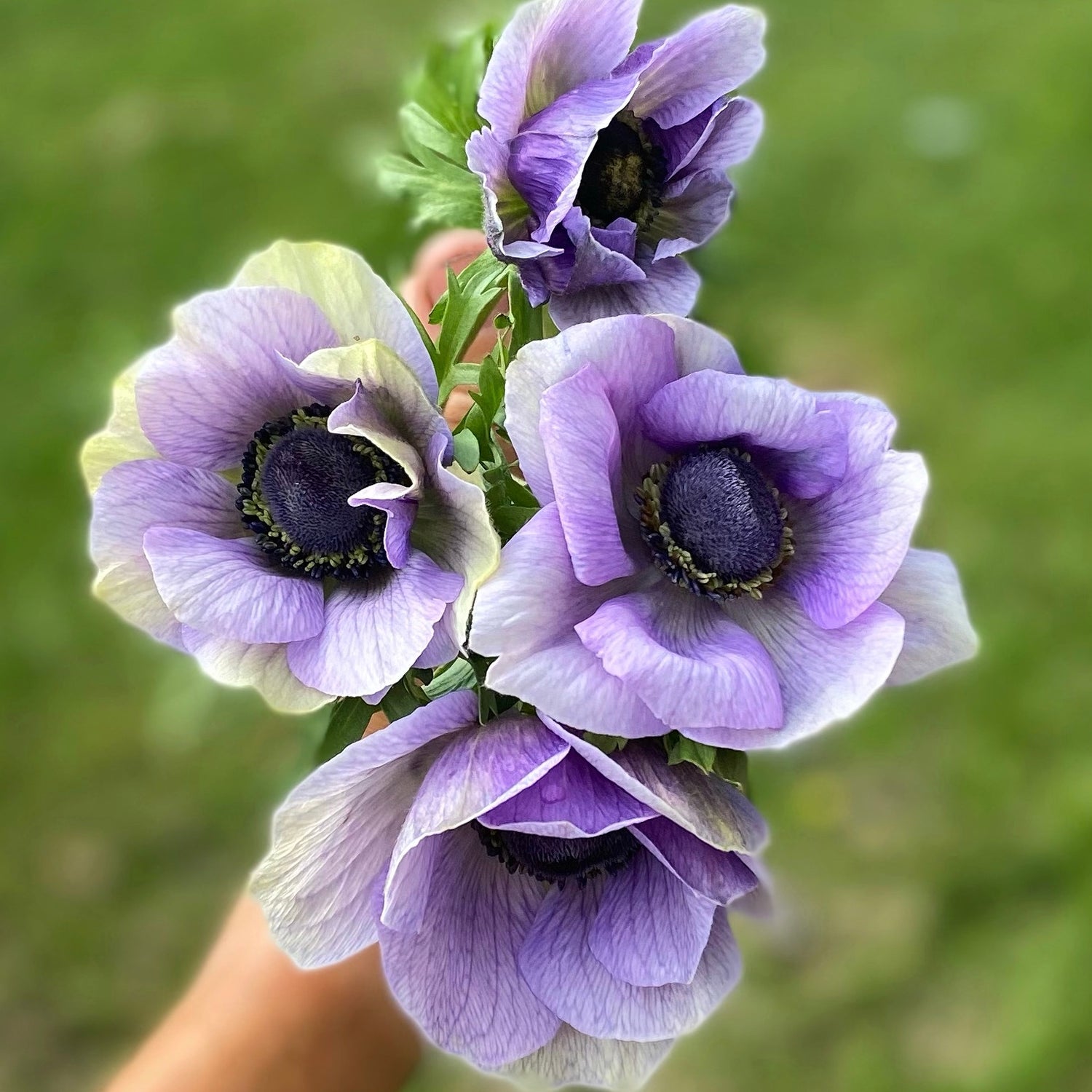It might seem daunting to plant ranunculus, or that they'd be difficult to grow, but with a little bit more effort than plopping a tulip bulb in the ground, not much else is different. If you are not ready to plant them yet, store them at room temperature, and most importantly—dry! Humidity is the enemy while storing corms.
Soak Your Corms
You've received ranunculus corms that look like shriveled up octopi, or anemone corms that look like shriveled up acorns, and you're wondering how on earth is this going to bloom into flowers? Well, these are your corms in their dormant state, and the first step is to take the corms and soak them in room temperature water for 4-6 hours.
In this time you'll notice that they plump up quite nicely (ranunculus more so than anemone) and are already starting to look a heck of a lot more appealing. During the soaking stage, if you feel so inclined to do so, change out the water a couple of times to help maintain oxygen levels, but this step isn't necessary if you forget and you won't ruin your corms.

To Pre-Sprout or Not?
There is no right or wrong way, but let me explain to you my thinking: keep it simple and don't overthink it. Many growers will pre-sprout their corms, meaning that after the soaking stage, they place them in trays or cells with soil, place them in a dark, cool room and leave them to sprout for 10-14 days in an attempt to get a head start on the growing and eventual harvest of these beauties.
My honest thoughts? A waste of time. I end up losing corms to mold if the soil is too moist, or they dry out if it isn't moist enough. I end up forgetting about them and it ends up being a wasted step, so I choose to not do this anymore. Also, you need to account for hardening off the plant before you make the move outside, just another step that I don't want to make time for.

How to Plant
When planting ranunculus, make sure the "legs" or fingers of the corm are pointing down and the flat end is up, with anemones, also plant with the point(s) going down into the soil. If you can't tell on an anemone corm which way to plant, don't worry---plant it and the sprout will find the surface eventually.
Choose a spot to plant that is east-facing, if at all possible. This gives enough sunlight in the morning and afternoon for these beauties to grow and thrive, but also reprieve from the hot afternoon sun. If this isn't possible, don't worry---they do great in full sun!

Plant 3-4" deep in well-worked and well-draining soil and about 6-8" apart. If you're planting for landscape, plant in clusters for a beautiful visual effect, if you're planting to cut, plant in long, narrow rows.
When to Plant
I am in zone 3, so this advice is for zone 3. If you're in a warmer zone, I'm going to send you to Google to help because I have no idea how to fall plant these flowers and I don't use a greenhouse or hoop house to get a jump on my season. You can also check out Dahlia May's excellent guide to growing ranunculus.
I plant as soon as the soil is workable in April. Ranunculus and anemones love cool temperatures, they are a "cool flower" and they can handle some frost, snow, and even about -5C temperatures. If we get one of our spring blizzards and they're growing quite well, it's easy enough to place a frost cloth on the young plants to ensure their well-being.
If you don't need a head start on planting, plant whenever works best for you, BUT, know that when it consistently gets to temperatures >20C, those temperatures signal the plants to go dormant and shut down. They will not thrive in the heat of the summer, so don't plant too late.
Enjoy!



